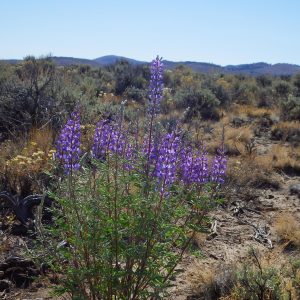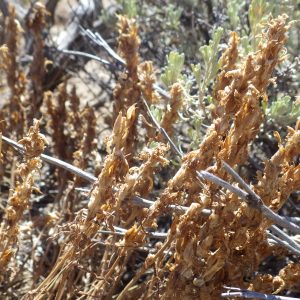
the mystery collector?
Stepping into the Sagebrush Steppe
My Conservation Land Management and Seeds of Success internship started out a bit abruptly. I went from just beginning to settle into a job at a local native plant propagation nursery when I heard about this fantastic opportunity to be a part of the Seeds for Success program and contribute to the International Seed repository at Kew Gardens in England. I jumped ship (actually with great support from the nursery) for this opportunity. With some quick response on my part (and fabulous support), I found myself (albeit a bit late in the season) here at Oregon’s Prineville BLM and contributing to not only Sage Grouse Restoration , but also the SOS program.
I missed the training in Chicago where I would have met Krissa and the Staff at Chicago Botanic Garden as well as the other CLM interns, but I have been following the blog entries to catch up and expose myself to what everyone else has been doing. Thanks for the Support Krissa and the help getting me on the payroll so quickly!
Coming into this program in the High Desert in mid-July meant that much of what is out in the Sagebrush steppe was decadent.” Necrobotany” so to speak! The high desert is full of color early and as the heat builds, so dies the vegetation… and that is in June. It’s a mad race now to find a live specimen for the herbarium and collect seeds before they all drop. I try to be in the field all 4 days a week.
My area for collection is huge and on the far end of the district. Like all the other interns, it seems, I make the long drive to the office only to pick up a rig and head back the other way to the field area for collection. At least I can do much of my scouting on good gravel roads to start and have not yet had to use a UTV (not having time to get certified on some of the other equipment has definitely reduced my options and encouraged me to hike and bike a lot more into potential collection sites). I don’t have a SOS team here in Prineville but I have been welcomed by field technicians as they head out to the field and they invite me along when they know of a good collection site for me. I get to benefit from their expertise and knowledge.

Castilleja chomosa ( red)
One of my first forays with my supervisor, Kristin Williams, was monitoring one of the special status populations of Calachortus longebarbatus (It was still there considering the pressure of gazing in the Big Summit Prairie area of the district),

calochortus longebarbatus
Luina serpentine ( did not find the populations) and assorted Castillejas . On the way I had some great views and a great population of Castilleja chromosa ( in yellow and red) and monarda fistulosa to contemplate.

Castilleja chromosa (yellow)

For my bigger collections, I have been lucky to have the support of the Heart of Oregon Youth Corps (part of Americorps). While most of the crew admitted they did not to want to do this for a living, they good naturedly took direction and supported the effort. It’s much easier to collect 20,000 seeds in a day with 10 people than with one! Together we reached our 20,000 seeds for Carcocarpus ledifolius, Eriogonum saphaerocephalum, Tetradymia canescens, Kolleria cristata, and hopefully a few more.

collections spilling out of my cubby
My cubby is starting to look like a fire hazard with bags of seeds spilling out into the walkway. Bend Seed Extractory here I come!
I have also had the wonderful opportunity to help with a few other areas of the BLM, from Bat Telemetry research to range management, recreation planning, wildlife monitoring and perhaps even archaeological research – all while scouting and collecting for my seeds.
Of course there are a few trials and tribulations in this bucolic setting of happy seed collecting in the High Desert: 5 bee stings; 2 fire ant bites ( I’m allergic); severe thunderstorms ( got in the rig in the nick of time) ; weak paper bags that rip and pour all those hard won seeds out onto the ground; the oops moment of realizing there is a second species that looks startlingly similar that just got dropped into your bag; cheat grass in the socks, shoe laces and pant legs ; GPS problems because the SOS maps are so large; camera glitches with the fabulous new camera with a macro lens! ( yes have to go back out and get those pics that did not get saved onto the SD card); and a few bumps and dings along the way.
All in all an excellent start to an excellent adventure. Maybe I will make it to the Wall in the BLM herbarium someday?

Wall of infamy for SOS?
Robin Snyder
CLM/SOS Intern 2013
Prineville BLM, Oregon
















